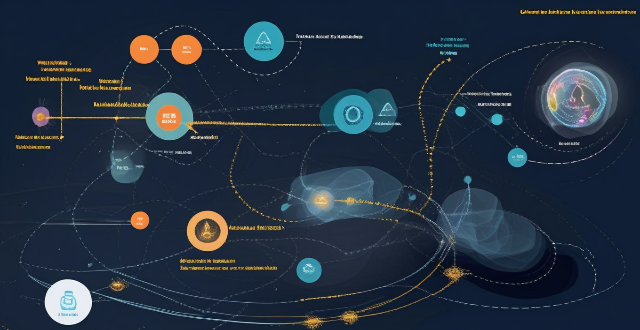Ground Cloud

What is cloud security and why is it important ?
Cloud security is a critical aspect of modern computing, given the increasing reliance on cloud-based systems and data storage. It involves a comprehensive set of technologies, procedures, policies, and controls designed to safeguard cloud environments. The importance of cloud security stems from the vast amount of sensitive data stored in the cloud and the potential risks associated with unauthorized access or data breaches. Cloud security encompasses various elements that work together to ensure the safety and integrity of cloud-based resources. These include encryption, identity and access management (IAM), intrusion detection systems (IDS) and intrusion prevention systems (IPS), data loss prevention (DLP), and security information and event management (SIEM). The significance of cloud security can be understood through several key points: data protection, compliance requirements, business continuity, trust and reputation, and risk management. To effectively manage cloud security, several key aspects must be addressed: data encryption, access controls, regular audits, security updates, and education and training. In conclusion, cloud security is essential for protecting valuable data, maintaining compliance, ensuring business continuity, and preserving the trust and reputation of an organization. As cloud computing continues to grow, so does the need for robust security measures to safeguard against evolving threats.

How do data protection regulations apply to cloud computing services ?
**Data Protection Regulations in Cloud Computing Services** Data protection regulations govern the collection, storage, processing, and transmission of personal information to protect individuals' privacy rights. These regulations apply to all organizations that process personal data, including those offering cloud computing services. Cloud service providers must ensure their services meet specific requirements under data protection regulations, such as data minimization, security, transparency, portability, and accountability. The application of these regulations to cloud computing services enhances security, improves trust, and increases transparency but also presents challenges like complexity, cost, and interoperability. As cloud computing services grow, understanding and complying with data protection regulations is crucial for both providers and users to protect personal data effectively.

What is the significance of communication protocols in cloud computing ?
In the realm of cloud computing, communication protocolsIn the realm of cloud computing, communication protocols role in facilitating communication protocols play a pivotal role in facilitating seamless and efficient data exchange between various components of a cloud infrastructure. These protocols ensure that data is transmitted reliably and securely across different platforms, devices, and applications within the cloud ecosystem. This article delves into the significance of communication protocols in cloud computing by highlighting their key functions and benefits.

**What third-party apps integrate well with iCloud for productivity and management ?
The article discusses the best third-party apps that integrate well with iCloud, a cloud storage service provided by Apple Inc. The apps include Evernote, Microsoft Office Suite, Adobe Creative Cloud, Todoist, and Trello, which allow users to store their data on iCloud Drive and access it from any device running these apps. These apps provide features like creating and organizing notes, saving web clippings, capturing ideas, saving documents, collaborating on documents in real-time, storing creative projects, working on projects offline, creating tasks and setting reminders, organizing tasks into projects and sections, creating boards and adding cards representing tasks or ideas, and assigning cards to team members. Overall, these apps make it easy for users to collaborate on projects with others in real-time and manage their tasks from anywhere.

What are the best exercises for a full-body workout at home ?
A full-body workout at home is an excellent way to maintain your fitness levels without the need for a gym membership or equipment. Here are some of the best exercises that you can do at home to get a comprehensive workout: 1\. Squats: Stand with your feet shoulder-width apart and your arms straight out in front of you, then lower your body by bending at the knees and hips until your thighs are parallel to the ground. Pause for a moment, then push through your heels to return to the starting position. Repeat this movement for 10-15 repetitions. 2\. Lunges: Stand with your feet hip-width apart and take a big step forward with one foot, then lower your body until both knees are bent at 90-degree angles. Keep your front knee directly over your ankle and your back knee hovering just above the ground, then push off with your front leg to return to the starting position. Repeat this movement for 10-15 repetitions on each leg. 3\. Push-Ups: Start in a plank position with your hands shoulder-width apart and your feet together, then lower your body until your chest nearly touches the ground. Push through your palms to return to the starting position. Repeat this movement for 10-15 repetitions. 4\. Plank: Start in a push-up position with your hands shoulder-width apart and your feet together, then lower your forearms to the ground so that your elbows are directly under your shoulders. Hold your body in a straight line from head to heels for 30 seconds to a minute. Repeat this movement for 3-5 sets. 5\. Burpees: Start standing with your feet shoulder-width apart and your arms at your sides, then lower your body into a squat position and place your hands on the ground in front of you. Jump both feet back into a plank position, perform a push-up, jump both feet forward so they land outside of your hands, stand up and jump into the air with your arms overhead. Repeat this movement for 10-15 repetitions.

How has climate data analysis evolved over the past decade ?
Over the past decade, climate data analysis has seen significant advancements in various aspects, including improved data collection through advanced satellite technology and ground-based measurements, advanced modeling techniques such as complex climate models and data assimilation, enhanced computational power with supercomputers and cloud computing, big data analytics involving machine learning and AI, open data initiatives promoting public availability of data and collaborative platforms, and an interdisciplinary approach integrating multiple fields and engaging the public. These developments have revolutionized our understanding of the Earth's climate system and paved the way for more accurate and comprehensive climate research and policy-oriented decision support tools.

How can technology improve the process of climate information sharing ?
In this topic summary, we will discuss how technology can improve the process of climate information sharing. Technology has revolutionized the way we share and access information, including climate data. With advancements in technology, it is now easier than ever to collect, analyze, and disseminate climate information to a wide range of stakeholders. Data collection and analysis are crucial steps in the process of climate information sharing. Remote sensing, ground-based sensors, and data analysis software are some of the tools that can be used to collect and analyze climate data. These tools can help us monitor changes in climate patterns over time, identify trends and predict future climate events. Dissemination of climate information is another important step in the process. Online platforms, social media, and open data initiatives are some of the ways that climate information can be shared with researchers, policymakers, and the general public. These platforms can also offer interactive tools for visualizing and exploring the data. Collaboration and partnerships are also essential in improving the process of climate information sharing. Cloud-based collaboration tools, partnerships with tech companies, and crowdsourcing are some of the ways that researchers and stakeholders can work together on climate projects, sharing data and insights in real-time. In conclusion, technology plays a crucial role in improving the process of climate information sharing by enhancing data collection and analysis, facilitating the dissemination of climate information, and fostering collaboration among stakeholders. As technology continues to evolve, we can expect even more innovative solutions for addressing the challenges posed by climate change.

How would a lunar base contribute to humanity's understanding of the universe ?
A lunar base would significantly contribute to humanity's understanding of the universe by providing advanced research opportunities in geology and astronomy, driving the development of space technology, serving as a training ground for future space missions, and promoting international collaboration.

How can technology support more accurate and efficient climate policy evaluations ?
Technology aids in accurate & efficient climate policy evaluations by offering tools for data collection, modeling, visualization, collaboration, and automation.